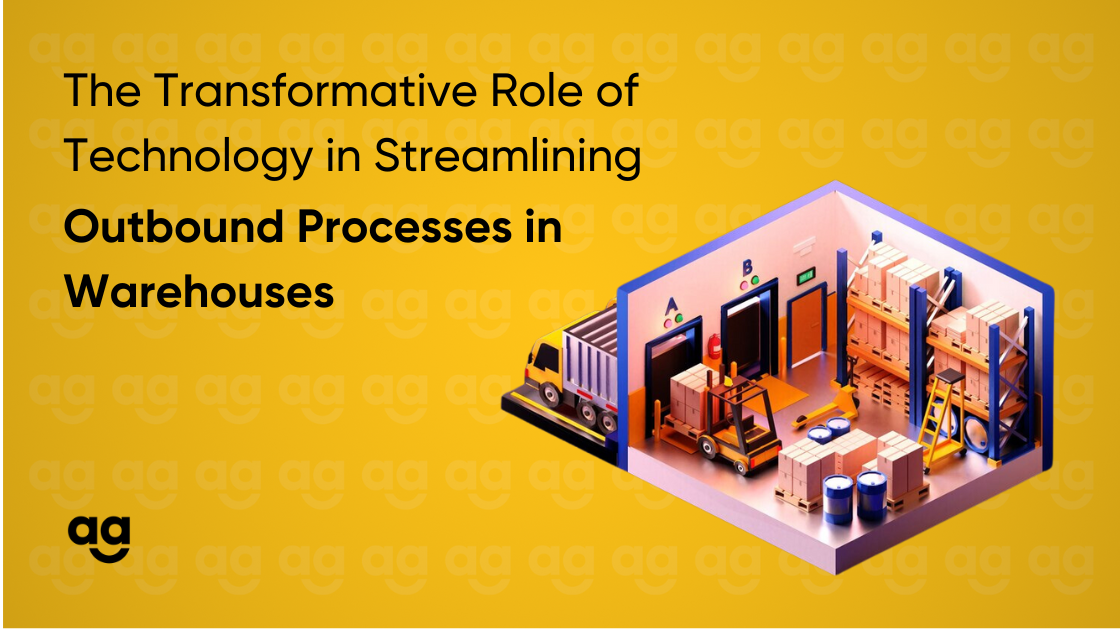Introduction
Within the ever-changing realm of contemporary logistics, the outbound procedure within warehouses is essential to guaranteeing precise and on-time delivery to clients. Modern technology integration is changing the game and redefining how warehouses approach and manage their outbound operations.
This blog will help us understand how technology has helped in streamlining outbound processes in warehouses.
8 Ways Technology has Streamlined Outbound Processes in Warehouses
1. Warehouse Management System (WMS)
The WMS is the primary component of outbound procedures that is supported by technology. Order processing, shipping tracking, and inventory control are all optimized by WMS, a strong tool.
Warehouse managers are able to allocate resources effectively and make well-informed decisions by having real-time visibility into order status. WMS also reduces the possibility of errors by automating repetitive processes and offering precise data to support improved decision-making.
2. RFID and barcode scanning
The usage of barcode scanning and RFID technology has increased because of which outbound operations have leveled up like never before. Products are equipped with barcodes and RFID tags for rapid, error-free identification.
By ensuring that the appropriate products are chosen, packaged, and dispatched, RFID and barcode scanning lower the possibility of order inconsistencies and raises customer satisfaction levels all around.
3. Order picking technologies
Technology has changed order picking, a crucial part of export processes. For example, speech picking systems lead warehouse workers through the picking process with voice commands, increasing productivity and accuracy. Similar visual cues are provided by pick-to-light and pick-to-cart technologies to assist employees in finding and selecting goods more quickly and accurately.
4. Robotics and automation
By automating jobs like packaging and sorting, the incorporation of robotics in warehouses has streamlined outbound procedures. Order fulfillment can occur more quickly when products are handled by robotic arms precisely and swiftly. This lowers labor expenses while simultaneously lowering the possibility of human error, guaranteeing that the correct products arrive at clients on schedule.
5. Real-time visibility and analytics
Warehouses can view their activities in real time thanks to technology. Warehouse managers can examine data on order trends, inventory levels, and labor productivity with the aid of sophisticated analytics tools. Proactive decision-making made possible by this data-driven strategy enables warehouses to continuously optimize export processes and adjust to shifting needs.
6. Route optimization software
One essential component of the outbound process is efficient delivery. Using algorithms, route optimisation software finds the most economical delivery routes, cutting down on fuel expenses and trip time. This expedites delivery while also promoting cost-effectiveness and environmental sustainability.
7. Internet of Things (IoT) sensors
Internet to Things (loT) sensors are equipped in the warehouses which can track a number of variables including things like temperature, humidity and product movement.
These sensors help in guaranteeing the integrity and quality of goods while they are being transported and hence are very essential for outbound processes. When any deviations from ideal conditions are found, warehouse management can be alerted in real time and respond quickly.
Conclusion
In summary, the way that warehouses function has been completely transformed by the use of technology into outgoing activities. Technology plays a diverse role in streamlining processes, from improving order fulfillment accuracy to optimizing delivery routes.
The future of outbound procedures appears to be one of higher customer happiness, lower costs, and more efficiency as warehouses continue to invest in and deploy these technologies. Without a question, the thoughtful and purposeful integration of technology at every point of the supply chain will shape the future of logistics.







 Shipping
Shipping







